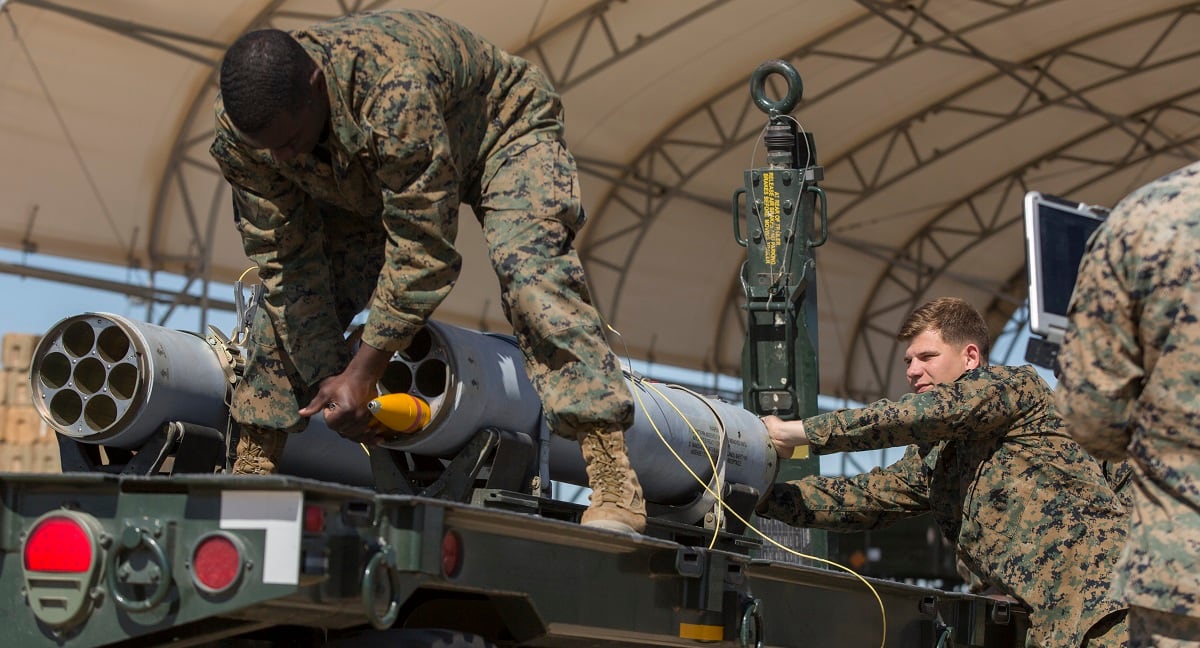Marines have recently conducted operational flights on F/A-18 Hornets for the first time with a new weapon system that turns relatively cheap, small rockets into precision kill munitions, according to officials with U.S. Naval Air Systems Command.
Known as the Advanced Precision Kill Weapon System, or APKWS, the system modifies 2.75 inch rockets into precision-guided munitions.
The APKWS is expected to boost lethality of the Corps’ F/A-18 Hornets by increasing the number of munitions armed on the aircraft and allowing the Hornet to maintain “forward-firing, moving-target capability,” according to a command release published Monday.
“This is an incredible weapons system that our most experienced pilots down to the newest pilots can effectively employ,” said Lt. Col. Jon Curtis, commanding officer of an F/A-18 squadron.
According to the release, the 2.75 inch rockets are “low cost” and because the rockets are small they have the added bonus of “limiting collateral damage.”
The APKWS system was given to Curtis’ squadron in February for testing and evaluation. The event was part of a rapid integration effort to field the APKWS for operational deployment in Operation Inherent Resolve, according to the release.

The APKWS already is fielded on several Navy and Marine air assets like the AV-8B Harrier as well as the UH-1Y, AH-1Z Viper attack helicopter and MH-60S/R. The Navy and Marine Corps already have fired thousands of these rockets.
The Navy and Marine Corps are sinking a considerable chunk of change into the APKWS system in the coming year. Nearly $91 million has slated for the APKWS guidance kits, according to Navy and Marine Corps fiscal year 2019 budget documents.
The new weapon system for the Hornet does come at a peculiar time, as the Corps is amid plans to shelve the legacy Hornets for the F-35B.
Late January, Marine Corps Commandant Gen. Robert B. Neller told audience members at a national security discussion at the Center for Strategic and International Studies that the Corps had too many Hornets and that some of the planes would eventually be scrapped to the boneyard.
“We need to get rid of them because we don’t have time to fix them,” Neller said.
However, the Corps still has a way to go to fully field its squadrons with the F-35, and the F/A-18 Hornets will still be needed.
Shawn Snow is the senior reporter for Marine Corps Times and a Marine Corps veteran.









